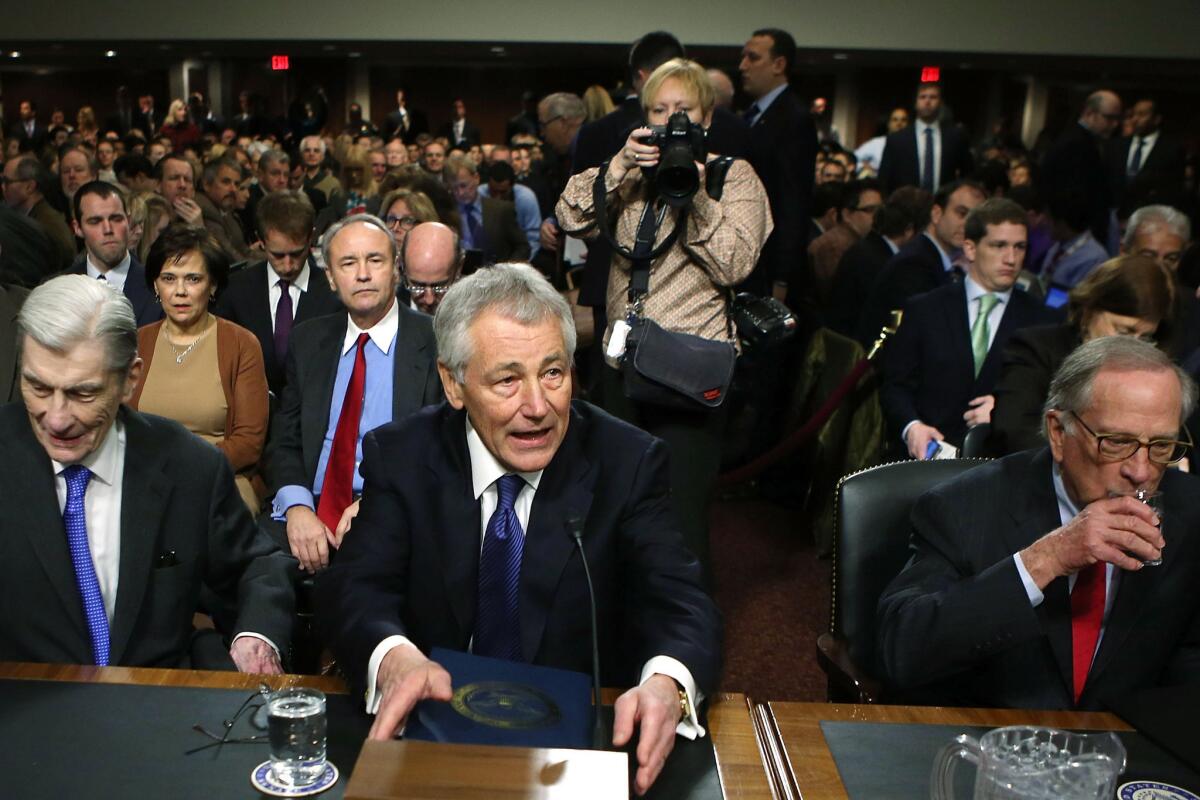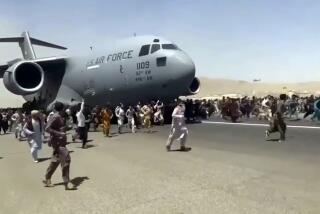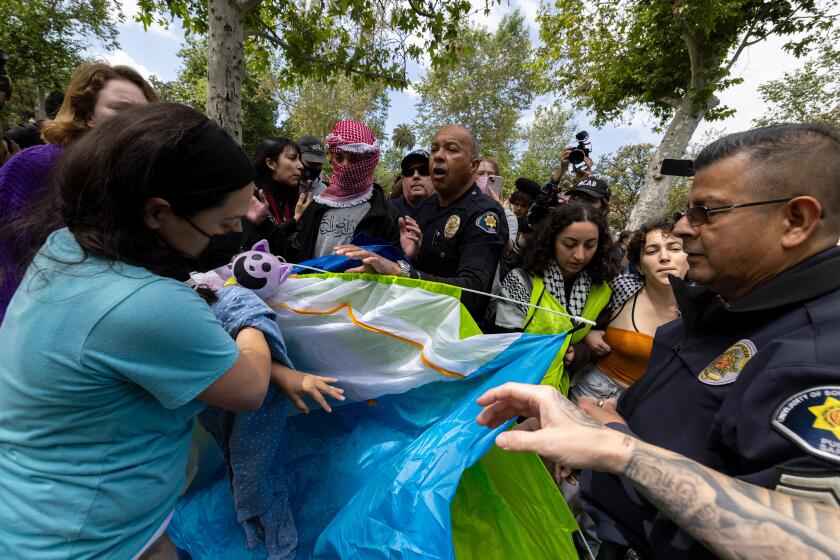McManus: What’s the Afghanistan mission?

Amid partisan questioning from both sides in former Sen. Chuck Hagel’s confirmation hearing last week, a major opportunity was lost.
Hagel’s fellow Republicans grilled the Defense secretary nominee on past statements about Israel and his opposition to President George W. Bush’s 2007 surge in Iraq. Democrats, defending their president’s choice, tossed him softballs.
What Hagel wasn’t asked about in any depth was Afghanistan, where about 66,000 U.S. troops are still risking their lives for a mission that no longer seems clear.
It will be the next Defense secretary’s job not only to bring most of those men and women home, ending an era of big-footprint U.S. combat in the Muslim world, but also to help reimagine the fight against terrorists for an era of belt-tightening.
During the nearly eight hours of Hagel’s hearing, no more than 10 minutes were spent on Afghanistan. Only three senators, all Democrats, bothered to ask about the future of the U.S. troop commitment there. No Republican took the opportunity to express any views, whether in favor of President Obama’s rapid withdrawal plan or against it.
As far as Congress is concerned, it sounded as if the war was already over. And that’s pretty much how Hagel described it as well.
“We have a plan in place to transition out of Afghanistan, continue bringing our troops home and end the war,” he said.
Only the war won’t be over. Even when most American troops come home, as is scheduled by the end of 2014, the Afghan army and police forces will still be fighting the Taliban. The terrorist Haqqani network, long allied with Al Qaeda, will still be roaming the border with Pakistan. Local warlords will still be vying with the central government for power.
And like it or not, the United States will still have a big stake in the outcome. Americans have understandably lost interest in spending more lives and money to prop up the corrupt government of Hamid Karzai. But as Obama has noted, we still want to make sure Al Qaeda can’t regain a foothold in Afghanistan, and we still have to worry about the stability of nuclear-armed Pakistan next door.
“We’re not winding down the damn war,” a former ambassador to Afghanistan, Ronald E. Neumann, growls. “We’re winding down our participation in the war. That’s extraordinarily different.”
Most of the debate in Washington has been about how quickly U.S. troops should leave Afghanistan, and how many should remain after 2014.
But those are the wrong questions. What we should be asking is what kind of outcomes the United States can realistically seek and what are the best ways to get there. Then we can discuss how many troops each of the options would require.
In the short run, between now and the end of 2014, the United States wants to do three things: complete the training of 352,000 Afghan security forces, help Afghans hold a reasonably fair election to choose Karzai’s successor, and work out terms for any post-2014 U.S. presence.
The just-departed U.S. commander in Kabul, Gen. John R. Allen, has pleaded publicly for as many troops as possible through 2014 to make those tasks easier. The White House has pushed back, insisting that withdrawals begin this spring.
Both options are defensible; it’s possible to withdraw some troops without making the rest of the mission impossible. What’s not defensible is the lack of clarity in the administration’s goals and plans.
That has created a big problem for Afghans, who are adjusting their own allegiances in case the Americans suddenly disappear and the Karzai government suddenly crumbles. Without more clarity, success — even the kind of partial, ramshackle success we are now seeking — becomes more difficult to achieve.
After 2014, when all U.S. combat troops are scheduled to be out of Afghanistan, the Obama administration still foresees two missions for a “residual force”: training and advising Afghan forces, and waging counter-terrorist operations against Al Qaeda and its allies.
It’s difficult to imagine that those missions could be very effective if we leave behind only the 3,000 U.S. troops the White House has been said to favor. (The White House has also proposed a “zero option,” but that looks mostly like a bargaining ploy in negotiations with Karzai.) Allen and Pentagon officials initially proposed keeping as many as 15,000 troops in place but successively pared the options to a range between 3,000 and 9,000.
Obama is mulling those figures and will probably make a decision in the next several weeks.
But at this point, deciding on a number is less important than deciding on a mission. We shouldn’t ask American troops — or our Afghan allies — to risk their lives for a cause that can’t be won.
Follow Doyle McManus on Twitter @DoyleMcManus
More to Read
A cure for the common opinion
Get thought-provoking perspectives with our weekly newsletter.
You may occasionally receive promotional content from the Los Angeles Times.






